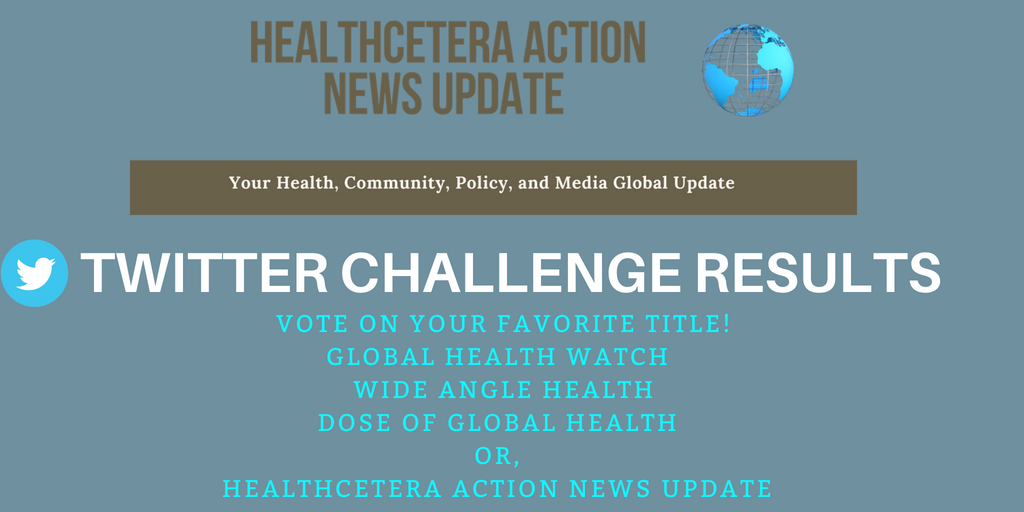
This serves as the third edition of HealthCetera’s global health policy and media action news update curated by the Center’s Katherine (Kayte) Green. This bi-weekly round-up intends to keep our community appraised of up-to-date news, policies, and ideas important to policy and social issues facing national and international health. This selection gathers information from a wide range of sources including, but not limited to: health associations and organizations, news sources, government agencies, academic publications, policy centers, and other national and international experts.
NATIONAL NEWS

SCOTUS
Washington – It has been a busy June for the Supreme Court of The United States. First Amendment Rights hearings have been tried and these cases will affect civil liberties for years to come. These decisions are a continuum of debates in the Supreme Court about how courts analyze First Amendment challenges.
Earlier this month, on June 4th, SCOTUS ruled in favor of a Colorado baker who refused to bake a cake to celebrate the marriage of a same sex couple because of a religious objection. The ruling was 7-2.
Tuesday June 27th’s ruling in favor of California anti-abortion clinics’ first amendment right, stating that these “clinic pregnancy centers” are not mandated to provide information on how to end pregnancies. The vote was 5-4.
Also on Tuesday, Trump’s Travel Ban was upheld handing the president a political victory and validating his power for border and immigration control. The vote was 5-4.
On Wednesday, the Court handed down a major blow to organized labor – ruling that government workers who chose not to join unions won’t have to pay for collective bargaining. The vote was 5-4.
And, the balance of the Supreme Court of The United States is in jeopardy with the announcement on Wednesday June 27th that Justice Anthony K. Kennedy will be stepping down. The bench was tipped right when Trump appointed Justice Gorsuch last year; and with another SCOTUS judge nomination for this administration, the scale will most likely tip further to the conservative right. In the coming years civil liberties will be called into question including: LGBTQ, Affirmative Action, Death Penalty, Abortion, Voting Rights and Gerrymandering, and Immigration.
LGBTQ RIGHTS:
SCOTUSblog: Justice Kennedy: The linchpin of the transformation of civil rights for the LGBTQ community
VOX: Anthony Kennedy’s retirement is devastating for LGBTQ rights
The Advocate: Justice Kennedy Retires, Putting Rights in Jeopardy
ABORTION:
NYT: Supreme Court Backs Anti-Abortion Pregnancy Centers in Free Speech Case
The Washington Post: Supreme Court says crisis pregnancy centers do not have to provide women abortion information
Reuters: Supreme Court Blocks California Law On Anti-Abortion Centers
The Hill: Supreme Court Ruling May Pave Way For More Faith-Based Pregnancy Centers
TRAVEL BAN:
NYT: Trump’s Travel Ban is Upheld by Supreme Court
The Chronicle: In Upholding Trump’s Travel Ban, Supreme Court Ratifies Worldview That Worries Colleges
UNIONS:
NYT: After Janus, Unions Must Save Themselves
The American Federation of Government Employees (AFGE): Following Janus ruling, workers must unite to preserve rights
Time: Supreme Court Deals Big Setback to Labor Unions
JUSTICE KENNEDY:
The New Yorker: Justice Kennedy’s Travel-Ban Opinion, in Light of His Retirement
“On Wednesday, what had seemed a particularly contentious finale to the Supreme Court’s term—with major cases involving union dues, the President’s travel ban, cell-phone location data, and anti-abortion “crisis pregnancy centers”—turned out to be a prelude to a bigger fight, when Justice Anthony Kennedy announced that he would retire at the end of July.”
NPR: Trump Says He Will Nominate New Supreme Court Justice From This List
The Atlantic: Justice Stevens: Roe Will Be Overturned if Kennedy Retires
RESOURCES:
United States Office of Labor
Utility Worker Union of America Education Portal
SCOTUSblog

Obamacare’s Pre-Existing Protections Under Siege, Again
” WASHINGTON — After failing to repeal the Affordable Care Act with a Republican-controlled Congress, the Trump administration is seizing on a different strategy for dismantling the law, one fraught with political risk. It is asking a court to throw out major elements, including hugely popular provisions that protect sick people from being denied health insurance or charged higher rates.” – Abby Goodnough, Robert Pear and Charlie Savage
RESPONSES:
Associated Press: Worker protections seen at risk in Trump health care shift
Reuters: U.S. Justice Department says Obamacare individual mandate unconstitutional
The Commonwealth Fund: The New Obamacare Lawsuit Could Undo Far More Than Protections for Preexisting Conditions
The NYT: Justice Dept. Says Crucial Provisions of Obamacare Are Unconstitutional
VOX: The Trump administration believes Obamacare’s preexisting conditions protections are now unconstitutional
Huffington Post:Trump Administration Takes New Aim At Obamacare’s Pre-Existing Protections
The New England Journal of Medicine: Repealing the ACA without a Replacement — The Risks to American Health Care

Trump’s Zero Tolerance Border Policy and Enforcement
This image of a mother seeking asylum on the Mexico border, who is being arrested for deportation in front of her two-year old daughter, has become the symbol of the devastating effects of Trump’s Zero Tolerance border control. It has been reported that over 2,300 children have been taken away from their families on the Mexican border since the beginning of May. The Zero Tolerance policy has immediate and long-term consequences for the children that are being torn from their families.
RESPONSES:
The Guardian: ‘Dumb, stupid’ family separations harm children, says detention camp manager
Politico: ‘Some Of The Kids I Spoke To Were Traumatized. Some Could Barely Speak.’
Reveal: Migrant Children At Risk Of Disease Outbreaks, Doctors Say
Bloomberg: Immigrant Children Forcibly Medicated While In U.S. Custody, Lawyers Say
The Associated Press: A Day With Border Patrol: Imperiled Infant, Distraught Dad
The Associated Press: Migrant Kids Could End Up In Already Strained Foster System
Time: Donald Trump Border Separation Policy
Newsweek: Immigrant children separated at border could suffer depression, disease and even earlier death, doctor says
The New Yorker: The Courageous Woman Who Is Organizing Separated Mothers Inside an ICE Detention Center
Kaiser Health News: Separating Children From Parents Can Make Them Easy Prey For Traffickers, State Department Report Warns
Michigan Health Lab: What Neuroscience Tells Us About Family Separation
Take a closer look at the detention centers and “tender age” shelters for immigrant children:
Kaiser Health News: 1 In 5 Immigrant Children Detained During ‘Zero Tolerance’ Border Policy Are Under 13
The Associated Press: Young Immigrants Detained In Virginia Center Allege Abuse
The New York Times: The Billion-Dollar, Secretive Business Of Operating Shelters For Migrant Children
GLOBAL NEWS

Migration Crisis in Europe
As the debate over migration in the United States heats up, Europe continues to be torn over what to do with the continent’s long running migration crisis. Many of those entering into the borders of Europe are coming from Northern Africa and crossing the Mediterranean Sea to seek asylum from terrible living conditions in their countries, spurred by economic conditions, political turmoil, and human rights violations.
RESPONSES:
Politico: EU leaders clinch migration deal in marathon summit
ODI: Aquarius, immigration caps and family separation: three lessons for doing migration differently
The Lancet: The displaced: looking for home away from home
BMC: European Union citizens’ views on development assistance for developing countries, during the recent migrant crisis in Europe
The Lancet: Offline: Migration—the new revolution
Devex: EU states push external migrant centers despite IOM doubts
The Washington Post: E.U. leaders agree on outline of migration deal
PAPERS:
Stevens, D. & Dimitriad,A. Crossing the Eastern Mediterranean Sea in Search of Asylum: Re-Evaluating Access, Agency, Policy and Protection. Academia.com.

UN Sexual Misconduct
In the era of the #MeToo movement, the United Nations is not immune to sexual harassment claims and has convened this week to investigate and address sexual misconduct within its organization. UNAids is under scrutiny for the mishandling of serious workplace sexual harassment claims. Female whistleblowers and HIV activists are urging global leadership to demand the Executive Director of UNAIDS, Michel Sidibé’s, step down because of his mismanagement of these claims.
The United Nations Secretary General, António Guterres has promised to make accountability for sexual misconduct a central part of his leadership.
RESPONSES:
Health Policy Watch: Accountability, Sexual Harassment Concerns In Spotlight At UNAIDS Board Meeting
NYT: U.N. Cases Read Like ‘Manual in How Not to Investigate’ Sexual Assault
UN News: UN leaders vow to stamp out workplace sexual harassment
The Guardian: UN sexual misconduct chief was promoted while facing harassment claims

European Food Labeling
PLOS Global Health: Cracking the Codex: the new frontier for nutrition labelling
The Codex Alimentarius Commision has been created by the United Nations World Health Organization Food and Agriculture Organization as the body that has outlined an international food standard. This is a two-prong mandate with the aim to: promote fair trade practices and protect consumer health. Although the standards are voluntary, these types of policies are often guidance for countries looking to develop national policies and could have the potential to show up in trade discussions globally. There will be a general meeting in Rome next week to further a discussion paper about these outlined standards.
“In short: what happens at Codex matters for public health nutrition.” – PLOS
RELATED REPORTS:
NYT: In Nafta Talks, U.S. Tries to Limit Junk Food Warning Labels
Other News:
EuroHealthNet Annual Report:
” EuroHealthNet is a not-for-profit partnership of organisations, agencies and statutory bodies working on public health, promoting health, preventing disease, and reducing inequalities. EuroHealthNet supports members’ work through policy and project development, knowledge and expertise exchange, research, networking, and communications.” – EuroHealthNet
Global Health Council – ADVOCACY UPDATE ~ JUNE 25, 2018
Global Health News Resources:
NYT Global Health News
CDC Global Health News
Global Health NOW
Global Health Council
STAT
WEEKLY OP-ED
(Unsponsored and unsolicited)

NPR Health: Atul Gawande’s Aim For Health Care: ‘Make It Simpler To Do The Right Thing’
Dr. Atul Gawande, the surgeon-writer-researcher has been named the CEO of a joint health care partnership venture unveiled earlier this year by Amazon, Berkshire Hathaway and JPMorgan Chase. These three prominent employers hope to bring down health costs for their employees. Gawande says his biggest goal is to help professionals “make it simpler to do the right thing” in delivering care to patients.
” The new enterprise will oversee health coverage for about 1.2 million employees of the companies and their families. Gawande said he will focus on the same behaviors by doctors and hospitals that he studies at his Boston-based think tank, Ariadne Labs. One of the biggest problems in health care is that “doing the right thing is incredibly complicated,” he told the Aspen gathering, and one of the biggest sources of waste in the system is that patients are given “the wrong care in the wrong way at the wrong time.” Read More.

Katherine Green works for the George Washington School of Nursing’s Center for Health Policy and Media Engagement. She holds a Master’s Degree in International Relations and Service Development. The focus of her research is gender equity and empowerment. She is passionate about working on unresolved social issues that deal with health, gender rights, LGBTQ, risk reduction, the arts, and justice. She has a background in social sciences and fine arts. Prior to joining GW, Katherine has worked in global and national health advocacy, development, and policy.
To subscribe and submit content to HealthCetera News Action Update email: nursingpolicy@gwu.edu
This serves as the third edition of














